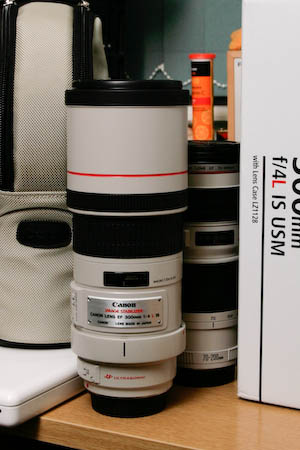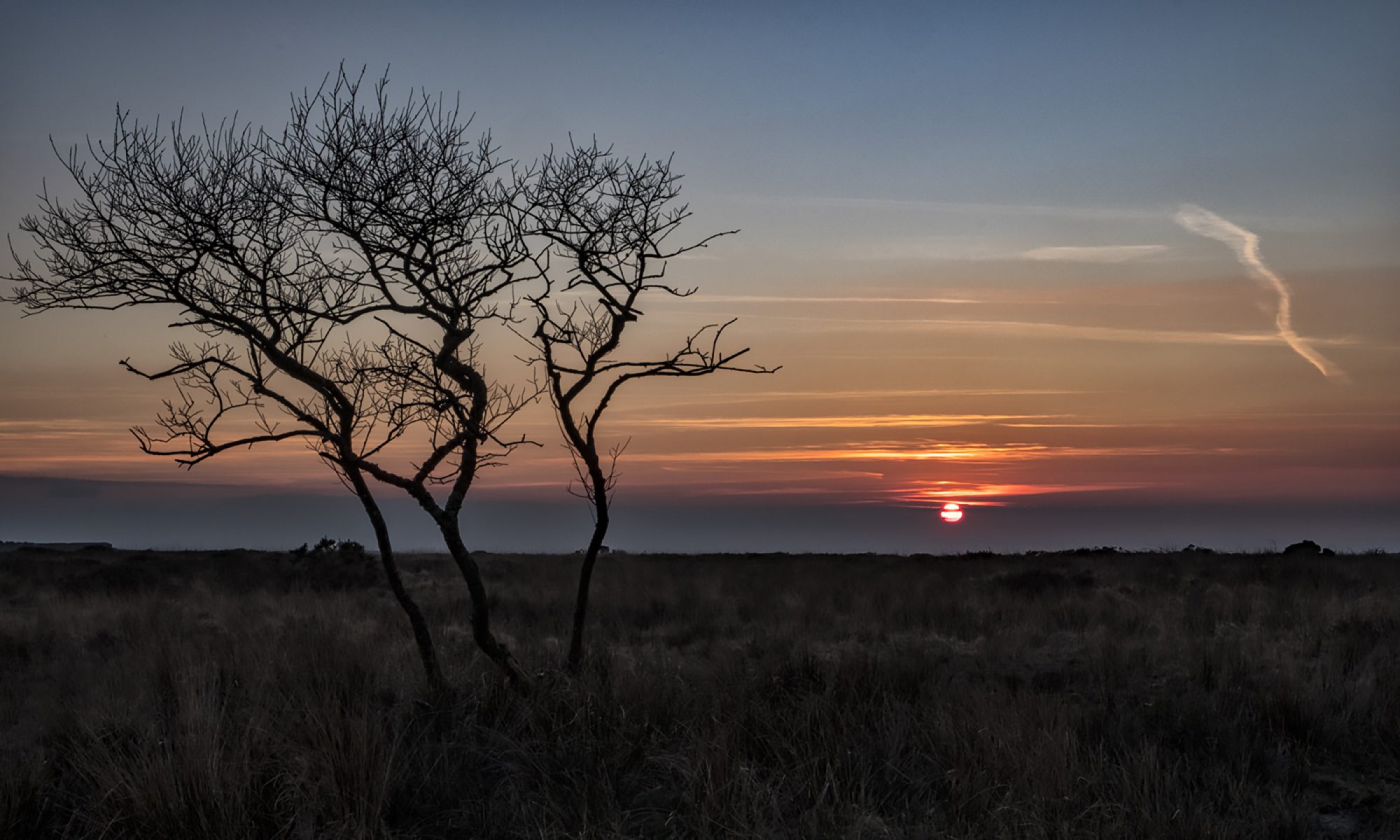Told you I’ve got a thing about primes, 3rd one of the year. Anyway, after a long wait I finally plunged the bank account and bought it. Again the source was the ever reliable Kerso. A veritable bargain at £700 delivered.
The lens comes in the usual Red, White and Black box. As it’s an ‘L’ Lens of course it comes with a case (though a canvas zip up case) and a hood. The hood on this lens is built into the body and can be used with screw in filters (77mm).
The lens is pictured in front of the EF70-200 f/4 L as a reference to the size difference (Hood down). It’s quite a weighty lens, though Canon have recognised this with the inclusion of the tripod mount (an optional extra with the EF70-200 series, though in fairness to Canon not really needed).
As with other telephoto lenses the Ef300mm has a short/long focus switch (1.5/3 to infinity). Other switches are the manual/auto focus and the IS controls. IS has mode 1 and 2 on this lens, but doesn’t recognise if the lens is tripod mounted. For tripod use it is recommended that IS is switched off. IS mode 1 works on all axis, mode 2 is used when panning.
Image quality was as I’d expected as I have used it before. Though in practice using such a long lens does require more precision (in my opinion!). As first I didn’t seem to get much out of the lens, a fair amount of images appeared a little soft. I don’t know why this was. After a few days use, everything seems as i’d expected it to be.
Nature photographers will tell you that 500mm is the minimum requirement, well to a certain extent I’d agree. However don’t get put off by the EF300mm as it is a capable lens. O.k. you can’t get as close, but for some nature you can get fairly close. For some images, you’ll need a hide. 
The Robin picture is an example of quality at around 5 metres from the subject (image is cropped from the centre of the frame). I could have got a little closer (in fact a Robin landed about 2 metres away) but I’m happy with the quality of the image taken.
If you need a little extra you could always use an extender, of course I’m in the position to own an EF1.4x. This extender increases the focal length to 420mm (f/5.6), now some might say why not just buy the EF400 f/5.6. Well with the 1.4x you actually get a 420mm with IS, something which is missing from the EF400mm. It’s an argument that can go on and on (and probably will), after all I also have the EF70-200mm so you could argue I don’t need the 300mm! But it’s nice to have options. It would complicate things more if I buy a 400mm (however I wont, yet).
Anyway, back to the lens. Auto focus is fast, though it depends on the focus switch. There is a fair amount of travel from 1.5 metres to infinity so best to get the switch in the correct position.
Many reviews note that the IS feature on the lens clunks a bit. Well it does, no real surprise it was one of the first iterations of IS. I guess if your in an environment where you have to be über quiet, then I could see a problem. For most it shouldn’t be a problem.

It has taken me a while to adjust to long focal lengths, my first experience with the EF80-200 f/4.5-5.6 kit lens from the Eos 500 kit was bad enough to almost put me off for life. The clarity of this lens is superb, I as usual just need to get out a little more and practice. In the mean time, there’s always the bird feeders to shoot.
